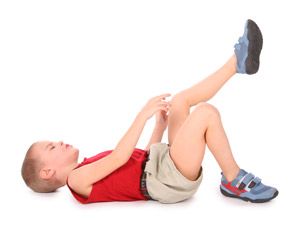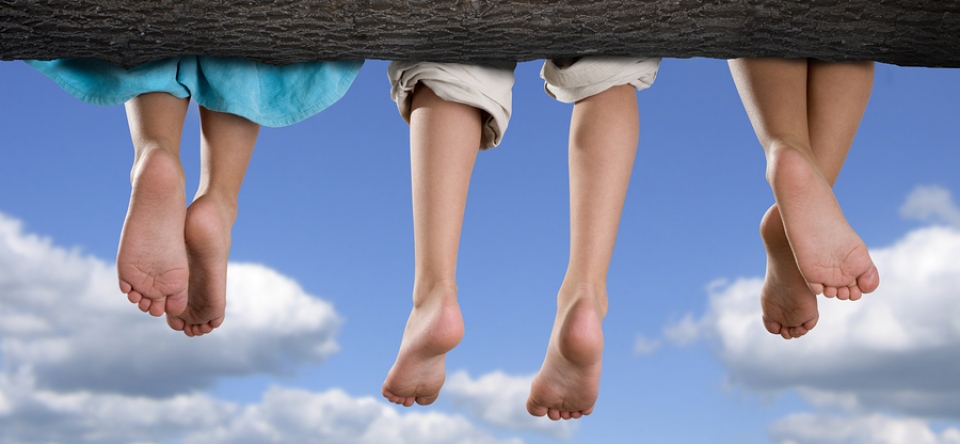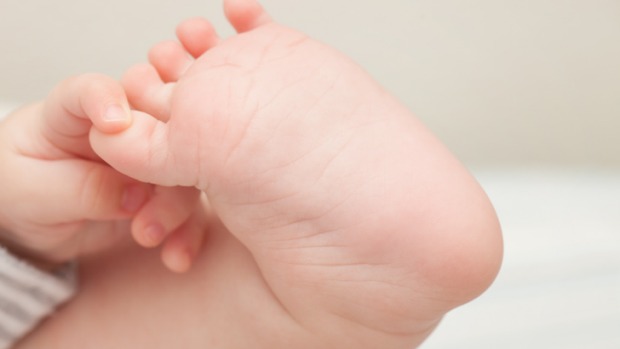Children’s Foot Health
Children’s feet differ from those of adults as they are not yet fully formed. At six months of age, the foot is still mostly cartilage, in fact the last bone does not begin to form until about three years of age. By 18 years of age, most of the bones are fully formed. Children’s feet are soft and pliable, making them prone to damage from abnormal pressure, such as shoes which are too small. Many childhood problems are also hereditary in nature.
With many years of operation, our podiatrists have enjoyed following the development of many patients from early childhood to adolescence.
Here at Pioneer Podiatry, we take pride in the results seen with appropriate intervention at the right time leading to healthy results for children later in life.
Heel Pain in Children (Sever’s)
Sever’s Disease or calcaneal apophysitis is the most common cause of heel pain in a growing child and is due to overuse and repetitive micro-trauma of the growth plate within the calcaneus (heel bone). As scary as the name may sound, it is not a disease, but an overuse condition. Sever’s is most common between the ages ten to 14 and is more common in boys than girls.
Does your child complain of the following?
- Pain or tenderness in the heel (especially squeezing edges of heel)
- Discomfort upon walking first thing in morning
- Limping, difficulty with walking
- More pain associated with running or playing sport – during and after
Knee Pain in Children
(Osgood Schlatter Disease)
Osgood Schlatter Disease is a condition that causes knee pain in sporty adolescents between ages of ten to 15 years. As scary as the name may sound, it is not a disease, but an overuse condition. Usually only one knee is affected but sometimes it can affect both knees.
Osgood Schlatters disease is self-recovering – it will go away completely when the two parts of bony growth join together. There are no known long term complications associated with Osgood Schlatters disease. Unfortunately, however, this condition can be very painful and limit the child’s sporting activity while they are waiting for it to go away, in some instances making them feel like ‘throwing in the towel’.
For this reason, telling your child to “rest, it will go away on its own eventually” is poor advice. Ask yourself, why would you let your child go through pain for weeks, months and in some instances years, when the pain can be easily managed or resolved?
Growing Pains
Growing pains is a common term discussed by parents. Growing pains are described as achy muscle pain that affect some pre-schoolers and primary school children. Firstly, it’s very important to rule out any more insidious causes of your child’s pain. See your GP if your child presents with the following: severe pain in only one leg, if pain affects them during the day, if the pain makes them limp, if they have joint swelling and redness, if they feel unwell or have a fever.
What are the symptoms?
- Pain usually occurs in late afternoon or evenings, and may cause your child to wake up during the night
- Pain usually in both legs, instead of only one leg
- Affect muscles, not joints (mostly affects thigh muscles, calf muscles and hamstrings)
- Pain has usually resolved by morning; does not cause child to limp
- Usually coincides with increased activity levels
- Child may also get headaches
Flat Feet in Children
In most cases, these ‘flat feet’ are part of normal development. Babies are born with flat feet, and as they develop into little people many developmental changes occur. As your baby starts crawling, cruising and then walking, this places different loads on their growing feet and leg bones, which go through many torsional changes.
My child has flat feet, should I be concerned?
Treatment is not always required for children with flat feet. If your child is less than six years of age they still have potential to keep growing and changing and to develop an ‘ideal’ arch height.
You should be concerned if your child develops some of the symptoms mentioned above, has only one flat foot, or if they no longer want to participate in sport.
Intoed Gait (Pigeon Toe)
Intoed gait is referred to when feet are turned inwards instead of slightly outwards. There is no evidence that intoe gait causes problems in the future. Intoe itself does not cause the child to develop pain. Most children manage their intoe very well. In some more obvious cases though it can cause the child to be clumsy and trip over their feet.
In healthy children, the three most common causes of intoeing come from either the level of the foot, leg or hip:
- Metatarsus Adductus – most common cause in an infant. The forefoot is twisted inward compared to the rearfoot, resembling the shape of a banana.
- Internal Tibial Torsion – increased twist of the tibia causing intoed appearance.
- Excessive Femoral Anteversion – internal position of the hip (internal >>> external range of motion of hip, should be equal). The knees point in towards each other (squinty patella).
More insidious causes of intoeing should be ruled out and may include cerebral palsy and hip dysplasia.
Joint Hypermobility
Joint hypermobility is a condition that features joints that easily move beyond the normal range expected for a particular joint. It is diagnosed by testing the range of motion of multiple joints within the body to see if they have more range/movement than the ideal range. A score is allocated (Beighton Score), if it is greater than four out of nine than the child has joint hypermobility.
Often joint hypermobility causes no symptoms and requires no treatment. If a child does have joint hypermobility and does develop pain, then they most likely have joint hypermobility syndrome. Joint hypermobility syndrome is considered a benign condition and is very hereditary in nature (passed on from parents to their children).
Should I be concerned if my child has joint hypermobility?
If your child’s arch height and foot posture is normal for their age, and they do not have any symptoms, treatment may not be necessary. However, it is important to have their poor foot posture addressed early if they have these obvious signs:
- Flat feet (collapsing arches) – due to the ligaments that support the arch being too ‘floppy and stretchy’ allowing the arch to collapse upon weight-bearing.
- Increased risk of widespread joint pain, leading to early degeneration and arthritis in adulthood
- Increased risk of soft tissue injuries, sprains, dislocations etc
- Less willing to participate in sport and exercise







